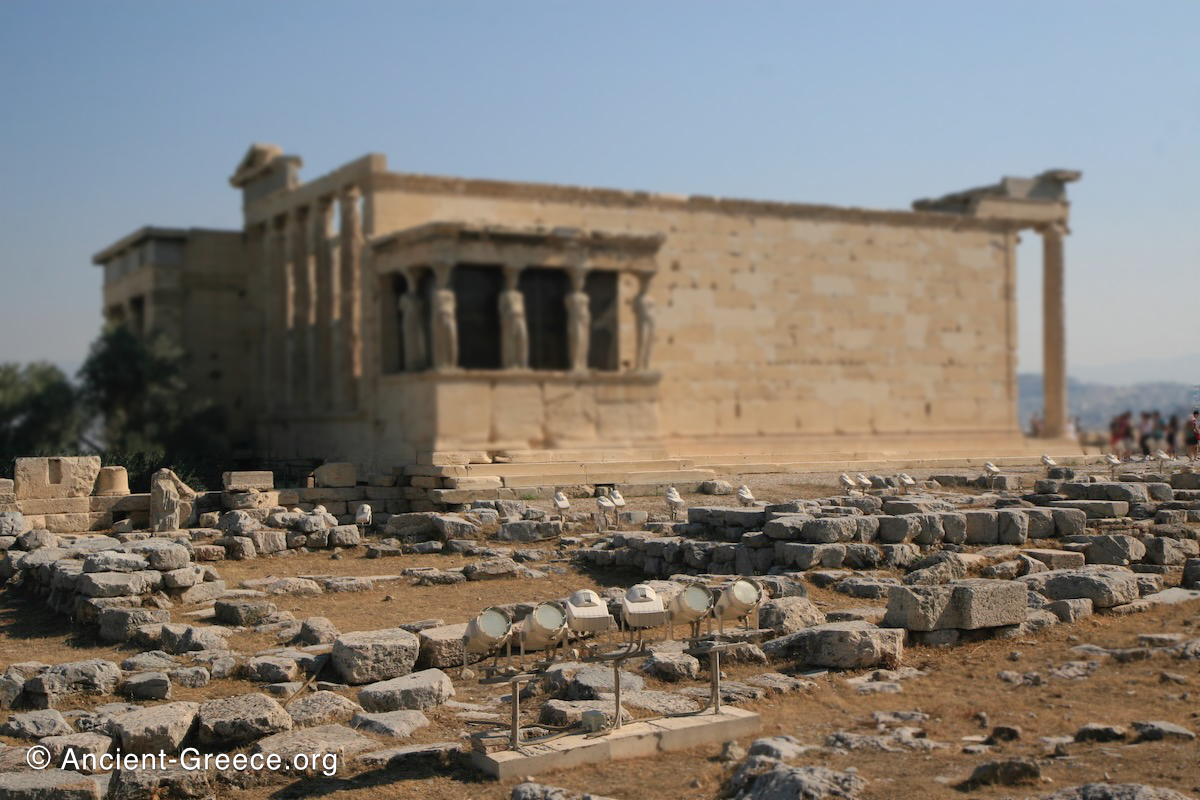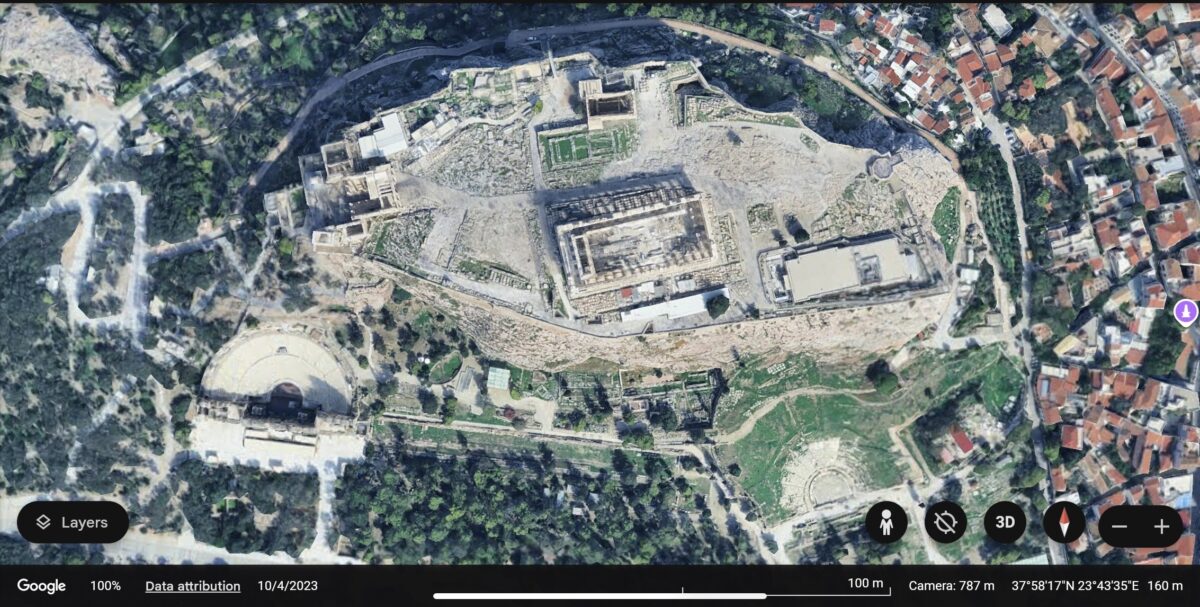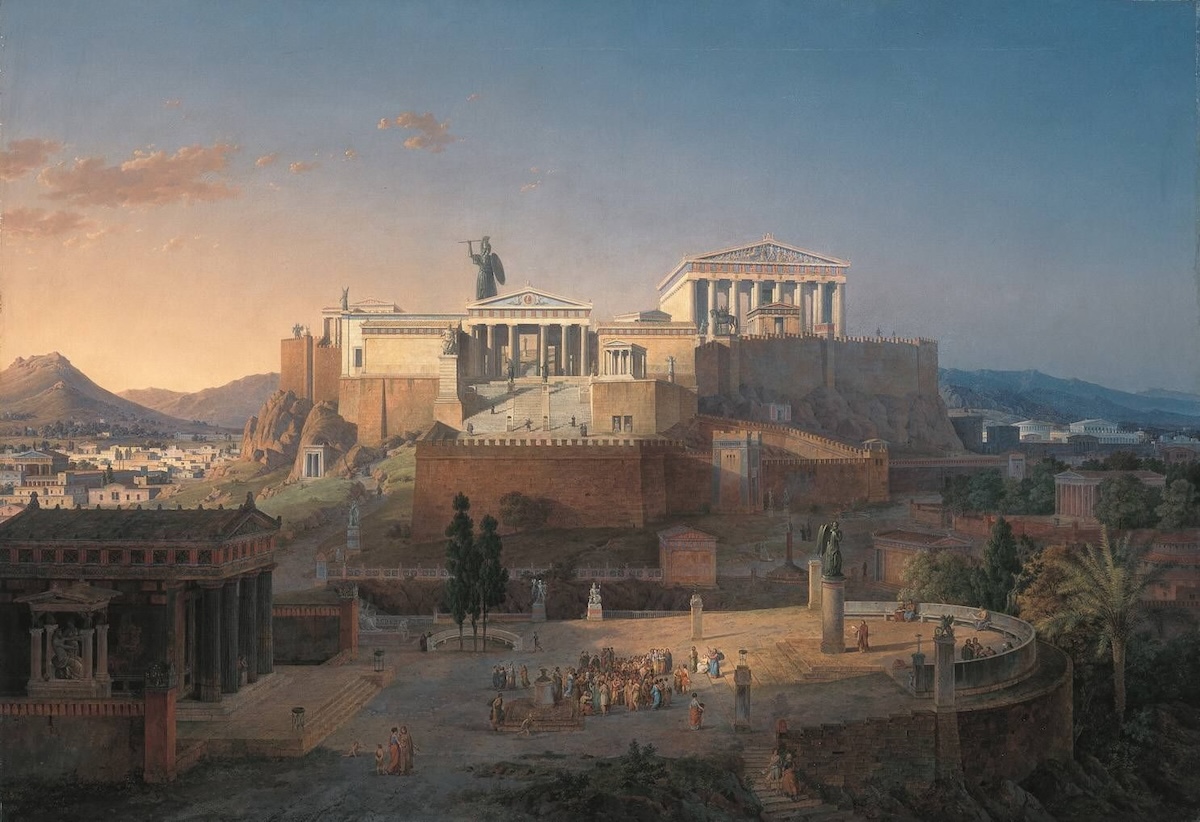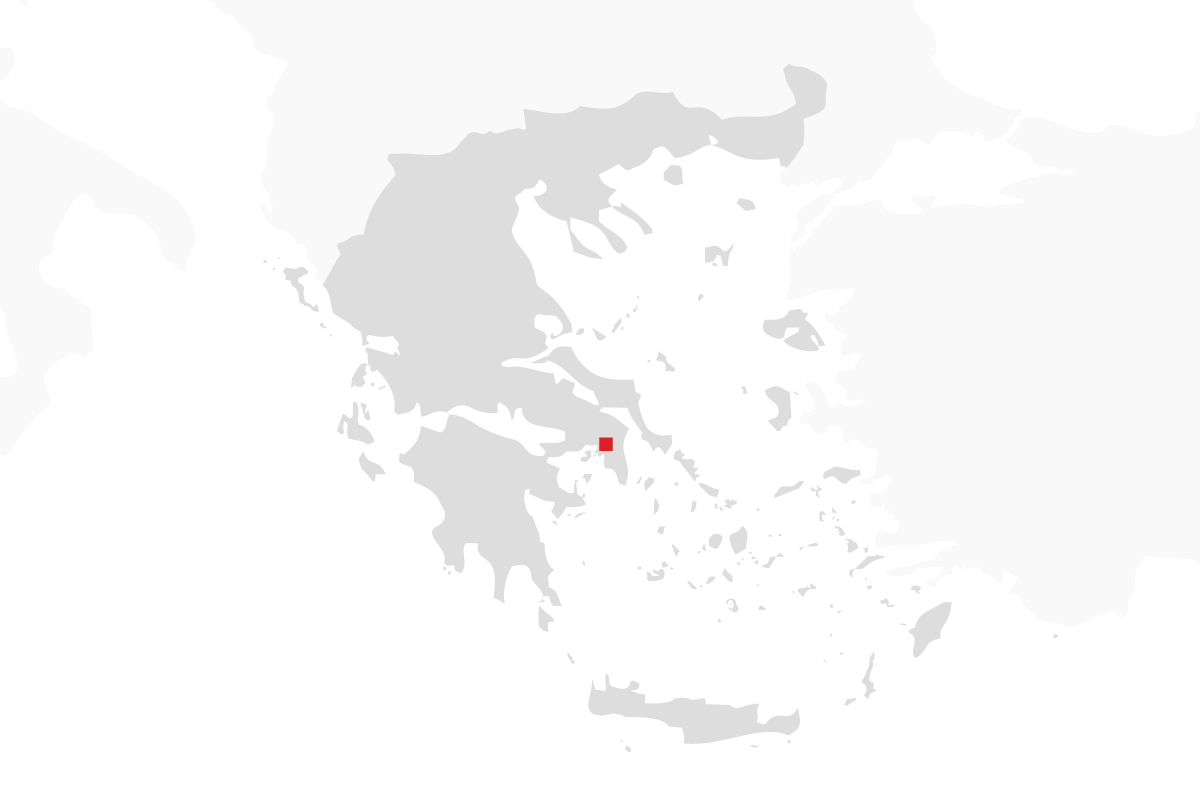
On this page:
The Acropolis (Ακρόπολις) archaeological site includes monuments and artifacts going back at least to the Mycenaean era. In its 3000 years old history, the Acropolis of Athens has enjoyed a significant position both in the history to its host city, and in the history of the what we call today “western civilization”.
The Acropolis embodies the ideals which forged western thought and culture: democracy, logic, rational thinking, scientific thought, philosophy, the worth of the individual citizen as an important entity in the socio/political hierarchy.
The Acropolis was always a sacred place for ancient Athenians going back to Mycenaean times (circa 1300 BCE). The Athenians worshiped their gods in temples there, conducted their festivals, and they fortified themselves on it whenever the enemies managed to reach the city of Athens.
The temples of the Acropolis of Athens were destroyed or burned on several occasions in ancient times, and the monuments as we see them today were the result of a terrific public project the Athenians undertook during “The Golden Age of Perikles” around 450 BC. The whole project was supervised by the famous sculptor and Perikles’ personal friend, Phedias.
It was designed as a monument to everything that the Athenian ideals represented, which had the individual citizen at its center.
Here are brief descriptions of the most renown monuments at the Acropolis of Athens:
Propylaea



The Propylaia (Propylaea), built between 437 – 432 BCE, to be the monumental entrance to the Acropolis rock. It is an impressive building that surrounds the natural entrance to the plateau, and one approached it in ancient times through an inclining ramp that led visitors straight through the steps in front of the Propylaia. Later, the Romans built a more dramatic ramp that guided the visitors up towards the entrance of the Acropolis in a zigzag fashion.
Parthenon







The Parthenon pushed the aesthetic conventions of its time to their logical conclusion: a building that touched the ideal in every detail.
The Parthenon strives for architectural balance and perfection in size and proportion, in a Doric modesty that contrasts with the lavish sculptural adornments it hosts.
The Doric columns are imposing and full of life in the way that they bow in the middle as if they are overburdened by the weight of the roof. They all appear perfectly aligned and yet closer observation reveals a controlled asymetry that compensates for the optical effects of light and the nature of the human eye to be fooled by its refraction.
Erectheion






While the Parthenon was the most impressive temple on the Acropolis, another building, the Erechtheion was built to accommodate the religious rituals that the old temple housed. Construction of the Erechtheion began in 420 while the Peloponnesian war was interrupted by the Peace of Nikias and continued through some of the most difficult times for the Athenians at war.
During this time the Athenians suffered a devastating defeat at Syracuse, saw their empire unravel through consecutive revolts, had their cherished democracy replaced by a brief oligarchy, and endured major defeat. The Erechtheion construction was concluded in 406 BCE, and soon thereafter, in 403 BCE Athens fell to the Spartans.
Temple of Athena Nike


The southwest of the Acropolis plateau, right next to the Propylaia, has been an important location of a sanctuary dating back to the Mycenaean era. It is a protruding tall mass of rock, strategically located in a way that protects the south flank of the most vulnerable access point and gate to the citadel.
Early in its history it was a place of worship for deities associated with wars, perhaps Bronze Age “Nike” gods or goddesses, which with time fused with the cult of Athena Nike of later centuries. Excavations have revealed that on this location an open pit existed that Bronze Age Greeks used to pour libations and to deposit primitive figurines of the deities worshiped.
Old Temple of Athena

The foundations of the old temple of Athena are all that remains. The scant foundations are visible in this photo foreground. The Erechtheion with the Caryatid porch that is visible in the background is a later addition to the Acropolis.
Between the Parthenon and the Erechtheion a careful observer can make out the foundations of an old temple dating to the 6th century BCE.
With time it came to be known as the “Old Temple” for it was several times rebuilt on the spot with its origins lost in antiquity. It was in this temple that the diipetes xoano of Athena resided adorned with the famed peplos until the Erechtheion was built, and it was around this temple that the cult of Athena was worshiped through the Panathenaic procession and the sacrifices and libations that took place at the altar just to the east of its entrance.
Pandrosion
A small temple dedicated to Pandrosus, the daughter of Kekrops (the first Athenian King), which was built inside the west court of the Erechtheion. This courtyard that contained the sacred olive tree is also referred to as the Pandrosion.The southwest of the Acropolis plateau, right next to the Propylaia, has been an important location of a sanctuary dating back to the Mycenaean era. It is a protruding tall mass of rock, strategically located in a way that protects the south flank of the most vulnerable access point and gate to the citadel.
Early in its history it was a place of worship for deities associated with wars, perhaps Bronze Age “Nike” gods or goddesses, which with time fused with the cult of Athena Nike of later centuries. Excavations have revealed that on this location an open pit existed that Bronze Age Greeks used to pour libations and to deposit primitive figurines of the deities worshiped.
Arrephorion
The Arrephorion is a small building next to the north wall where the Arrephores were housed. Arrephores were the young girls who labored an entire year to weave the peplos that was used during the Panathenaic procession. The peplos was woven at a location just below the Acropolis in the Agora, and the Panathenaic procession delivered the finished garment to the ancient statue of Athena in the Old Temple, and later in the Erechtheion.
Chalkotheke
Chalkotheke was a building that housed the treasury of Athens at the Acropolis. It contained the bronze (chalkos) and other metal possession of the treasury, and was located adjacent to the south wall, a little to the southwest of the Parthenon. Kimon built it about the same time as the Brauroneion.
A lengthy inventory inscription of the contents of the Chalcotheke reads:
“…the great lampstand for the Theoxenia; bronze trays; lion base; round trays; large kylix; footbasin; lekane; large krater 2 large bronze braziers; bronze chous; large lebetes; others small; lebetia; echinos; karchesia; 3 strainers; 2 cups; kylix; kothon; kissyphion; coller; large and small kyathos; large censer; another small; 18 spits; stand; large silver lampstand; bronze lampstand and statue from it; stone-fastened crab; stand; bronze lotharion; small hydria; handcuffs; 3 shield blazons: dolphin, eagle, horse; kesterion; iron from wheel; bronze kothons; 11 korai from the baskets; 5 stamps; discus; 2 helmets from statues; iron comb; bronze with wheel; bronze wheel; 4 crests from the statues; gorgoneion; paraboliskoi fo the tetracycle; 4 iron calyxs; 2 thermastes, one with chain; talent weight; zomerysis; 4 small bronze figures. “ (Delian Inscriptions, Bryn Mawr College).
Brauroneion
Brauroneion was a stoa dedicated to the goddess Artemis Brauronia. It was built next to the Chalkotheke, immediately to the right as one enters through the Propylaia. Built around 430 BCE, the stoa faces north with one wing to its west on the same orientation, and two westward facing wings to the east.
The Sanctuary of Zeus Polieus
To the East of the Erechtheion, the Athenians built the open-air sanctuary of Zeus Polieus (Zeus the City-Protector) around 500 BCE. It was a walled trapezoidal area with several entrances and a pediment over its main entrance. The walls contained an area for the annual ritual of Bouphonia during which the sacrifice of oxen took place. It is believed that the east wing of the walled area was where the oxen were held. No building foundations have been found, and the sanctuary’s layout is deduced from the rock cuttings on the site.
Pandion Sanctuary
The foundations of the Pandion sanctuary were unearthed during excavations for the construction of the Acropolis museum that now exists at the east corner of the Acropolis. The 40m x 17.5 m open-air walled sanctuary was built around 450 BCE to probably serve the Pandion (all-Zeus) festival. It was divided in two areas separated by a wall. The west area was used as a sanctuary and was built (or reconstructed) during the building program Perikles, while the east part is dated to pre-Perikles era and it is believed that it was utilized as a service area for the festival.
Acropolis Slopes












The surround slopes of the Acropolis are filled with ancient monuments dating from the Bronze Age to the Byzantine era. They are part of the archaeological site and included in the Acropolis ticket purchase.
Most notable of these are the Classical theatre of Dionysus (first row from top) and the Odeon of Herodes Atticus (second row), which is still used for musical performances today. Scant foundations of several other monuments appear in the photos of the two bottom rows: a Byzantine cistern, a temple atributed to Themis, a bronze foundry, Sanctuary of Asclepius, and the pedestal of Agrippa.










